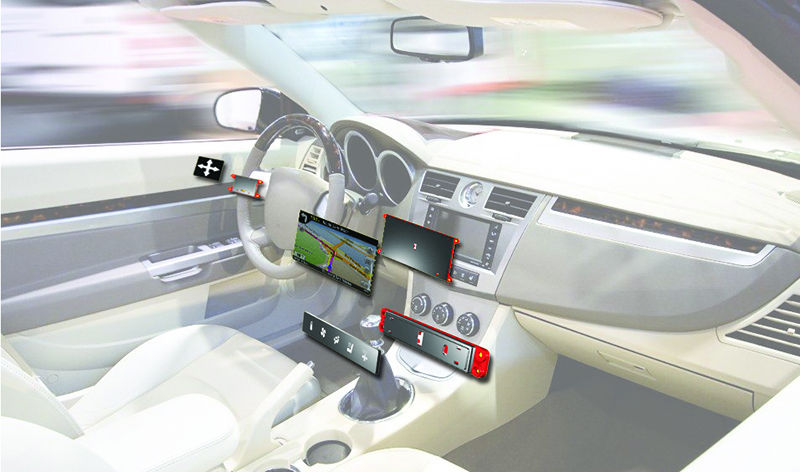How will ISO 26262 impact automotive electronics?
Automobiles today have more computing power than a fighter jet from the 1960s.There has been a huge influx of electronics integrated throughout a vehicle, including the engine, power train, chassis, body systems, comfort systems, active safety and Driver’s Assistance Systems (ADAS). The value of all this technology is upwards of 30% of the automobile’s total production cost. Eric Grange of C&K explains.
The problem is that, unlike a mechanical system, electronic systems’ reliability cannot be easily evaluated – and this fact has already led to nationwide recalls and other major problems. Many of these events were linked to faulty electronics in component or sub-systems that did not have proper quality or resistance levels, an electronic design that didn’t integrate all possible failure modes, or even control units that are unable to communicate between each other. Complexity is creating problems for automotive engineers – which is why almost all automakers are building their vehicles around the ISO 26262 standard.
ISO 26262 makes the complex electrical systems that have created huge unseen costs much more safe and reliable. It is the industry’s attempt at establishing best practices for designing reliable and safe automotive electronics systems. The standard requires that car makers perform an evaluation of the vehicle design to create an ‘Automotive Safety Integrity Level’ (ASIL) rating that describes the failure impact based on exposure, controllability and severity. Car companies use this evaluation to design a vehicle’s electronic system architecture. The architecture’s requirements will be shared along the supply chain - and may have an impact on component selection. ISO 26262 facilitates in-depth discussion between major stakeholders in the production process, including equipment partners, component companies and car makers.

Above: Switches are not the most expensive component within automotive electronics, but are critical to the success of any project because of their role within electronic units
ISO 26262’s implications on switch selection
Switches are not the most expensive component within automotive electronics, but are critical to the success of any project because of their role within electronic units. ISO 26262 doesn’t provide straightforward guidance as to which switches must be used in specific situations which can be frustrating for some engineers. Rather, the standard provides guidance on what the necessary reliability or self-controllability needs are based on the ASIL safety level.
Below are the five most common areas engineers must keep in mind while designing automobiles:
1. There can be no misinterpretation of turn signals. This means that car makers should look into switches with a clear mechanical position or electrical signal.
2. Electrical systems must be able to self-detect failures. This is why selecting double-throw switches – which enable mechanics to check and see if a line is open, broken or neither – or switches with differential impedance, is important in electrified handles or latch systems.
3. Reliability is paramount under ISO 26262. Automotive companies should incorporate redundancy over the switches to facilitate monitoring on two parallel circuits, which typically requires double-pole switches. If you need high intensity within your system, a double switch solution with haptic on one side and without on the other side will work well.
4. Robust design is important in today’s vehicles, so predictable ageing is part of the standard. Engineers need to understand the implications of each component choice within their electronic unit design. When evaluating switches, look for vendors that are able to perform the necessary testing that guarantees the performance of their products.
5. ISO 26262’s emphasis on durability and reliability makes long-life and changeover switches the most common solution for any switch decision that needs to be made. Tact, snap and pushbutton switches make sense in specific instances but, depending upon the design, keeping things simple is often the best option for engineers.
Think of ISO 26262 as the automotive industry’s answer to manufacturing’s TS16949 standard. There was resistance at the onset but the standard has since proven its worth in the ensuing years. Following ISO 26262 guidelines as well as the tips above and product designers will be in a prime position to avoid costly recalls and ensure the quality of their vehicles.



